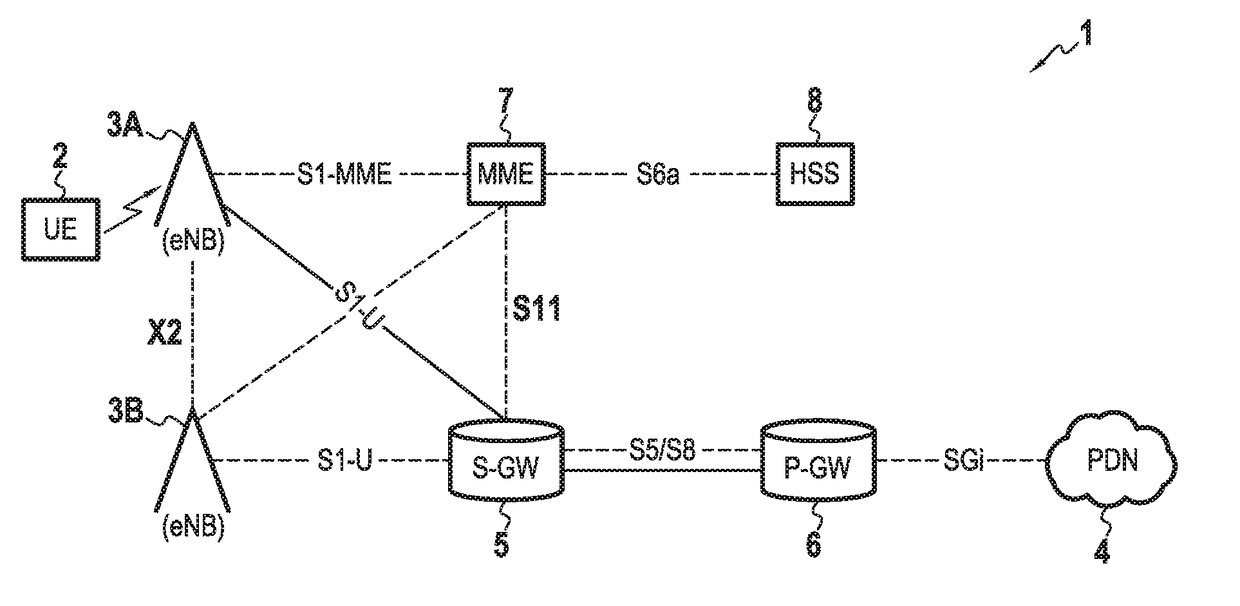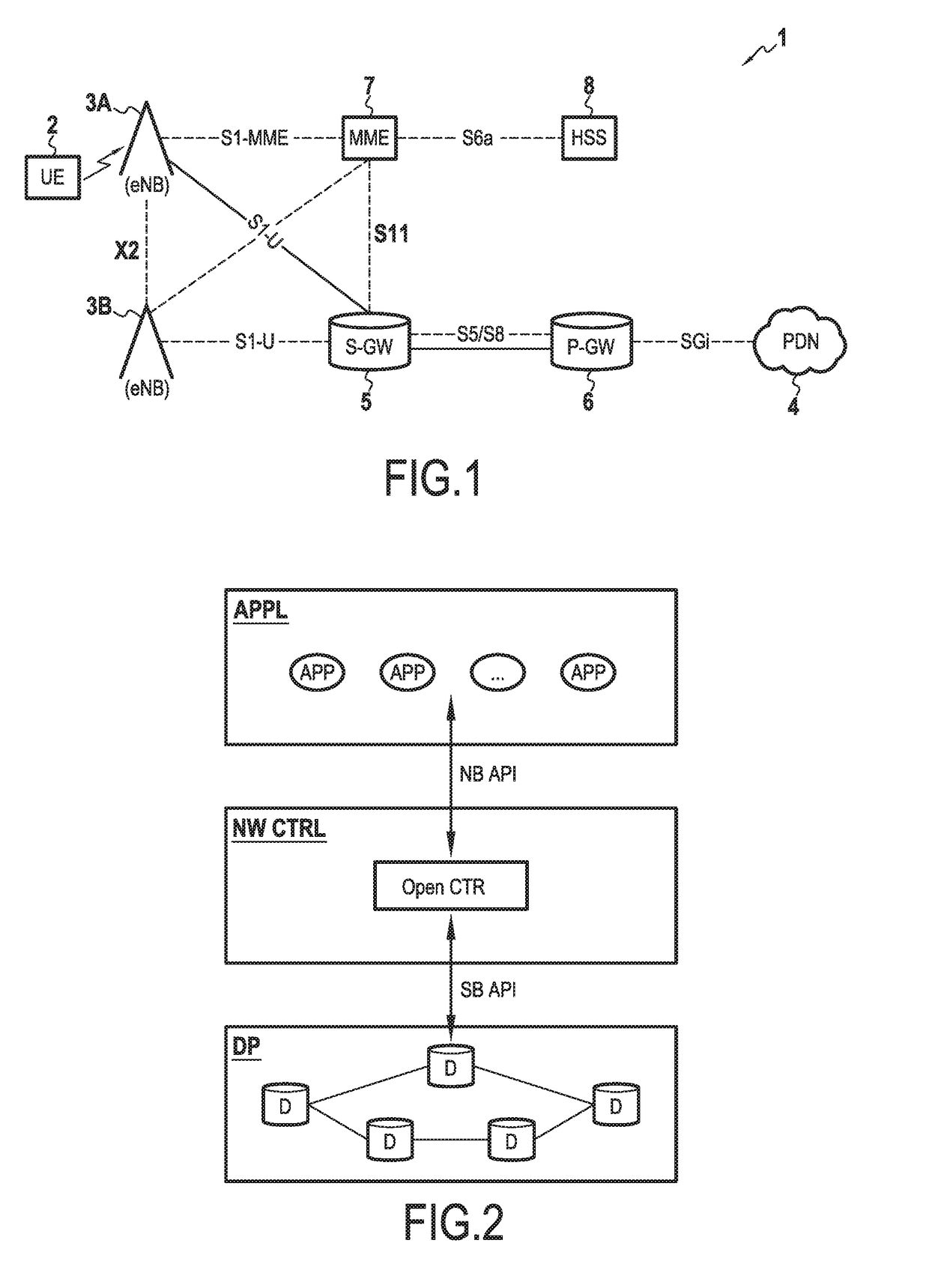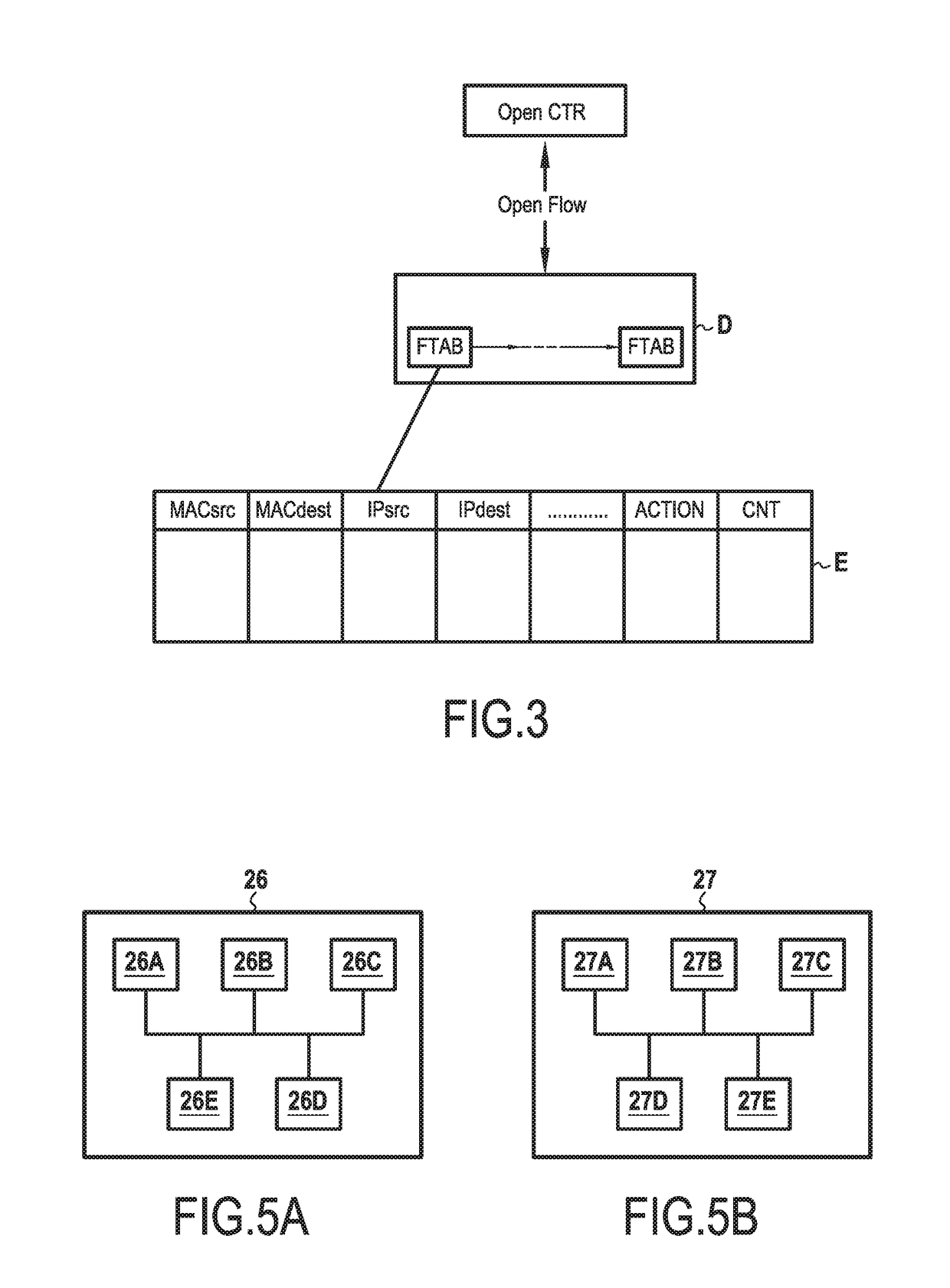Device and method for controlling an IP network core
a technology of internet protocol and core network, applied in the field of telecommunications, can solve the problems of difficulty for operators to integrate new services into ip core network, equipment is particularly expensive and difficult to manage, and implementation provides little flexibility in terms of reusing and/or reorganizing resources, so as to limit signalling
- Summary
- Abstract
- Description
- Claims
- Application Information
AI Technical Summary
Benefits of technology
Problems solved by technology
Method used
Image
Examples
Embodiment Construction
[0099]As mentioned above, the invention proposes implementing a software-defined network (SDN) architecture within an IP core network, such as for example an LTE / EPC core network, so as to improve the flexibility and the reliability in terms of IP connectivity of the core network. This new architecture makes it possible to satisfy the needs of users and operators more effectively, to integrate new services more easily, and to open the network safely to third parties such as mobile virtual operators.
[0100]More precisely, the invention defines a new control plane (signalling) and a new user plane (data) in the IP core network, in which:[0101]a centralized control device controls a plurality of interconnection gateways interconnecting the IP core network with external packet data networks and a plurality of switches (operating at level 2 of the open systems interconnection (OSI) model) connected to the gateways and to base stations of one or more access networks; and[0102]a plurality o...
PUM
 Login to View More
Login to View More Abstract
Description
Claims
Application Information
 Login to View More
Login to View More - R&D
- Intellectual Property
- Life Sciences
- Materials
- Tech Scout
- Unparalleled Data Quality
- Higher Quality Content
- 60% Fewer Hallucinations
Browse by: Latest US Patents, China's latest patents, Technical Efficacy Thesaurus, Application Domain, Technology Topic, Popular Technical Reports.
© 2025 PatSnap. All rights reserved.Legal|Privacy policy|Modern Slavery Act Transparency Statement|Sitemap|About US| Contact US: help@patsnap.com



